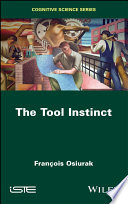

In 'The Tool Instinct', the author emphasizes that tools are not merely physical objects but extensions of human capabilities. The book explores how tools, both tangible and intangible, shape our behavior, decision-making, and creativity. By understanding the nature of tools, readers can better harness their potential to enhance productivity and innovation. The author argues that tools are designed to solve specific problems, and recognizing the underlying purpose of each tool can lead to more effective usage. This understanding also extends to digital tools and software, which have become integral in modern work environments. The exploration of tools leads to a deeper appreciation of their role in human development and societal progress.
Continue readingThe book delves into the historical evolution of tools, tracing their journey from primitive implements to advanced technologies. This evolution reflects humanity's quest for efficiency and effectiveness in various tasks. The author discusses key milestones in tool development, such as the invention of the wheel, the printing press, and the computer. Each of these innovations has transformed industries and altered the course of civilization. By examining this evolution, readers gain insights into how current tools have emerged and the potential future trajectories of technological advancements. The author encourages readers to think critically about the tools they choose to adopt in their personal and professional lives, considering how these choices can impact their productivity and creativity.
Continue readingThe psychological relationship between humans and tools is a central theme in the book. The author discusses how tools can influence our mindset, behavior, and emotional responses. For instance, the use of certain tools can foster a sense of control and empowerment, while others may lead to frustration or dependence. The book highlights the importance of being mindful of the tools we use and the psychological effects they can have on our performance and well-being. By recognizing these impacts, individuals can make more informed choices about the tools they incorporate into their lives, leading to improved mental health and productivity.
Continue readingCollaboration is a key component of modern work, and 'The Tool Instinct' emphasizes the role of tools in facilitating teamwork and communication. The author explores how various tools, from project management software to communication platforms, can enhance collaboration among teams. The book provides examples of successful collaborations that have been made possible through the effective use of tools. Additionally, the author discusses the challenges that can arise when tools are misused or when teams become overly reliant on them. By understanding the dynamics of collaboration and the tools that support it, readers can improve their teamwork and achieve better outcomes.
Continue readingLooking ahead, the book discusses the future of tools and the potential impact of emerging technologies such as artificial intelligence, automation, and virtual reality. The author raises important questions about how these tools will shape our work and personal lives in the coming years. The discussion includes the ethical implications of advanced tools and the importance of maintaining a balance between technology and human intuition. Readers are encouraged to stay informed about technological trends and to remain adaptable in their approach to new tools. This forward-thinking perspective prepares readers for the inevitable changes that will arise in their industries and encourages proactive engagement with future developments.
Continue readingOne of the practical takeaways from 'The Tool Instinct' is the emphasis on choosing the right tools for specific tasks and goals. The author provides a framework for evaluating tools based on their effectiveness, usability, and alignment with individual needs. This framework encourages readers to critically assess the tools they currently use and to seek out alternatives that may better serve their objectives. The book includes case studies and examples of individuals and organizations that have successfully navigated the tool selection process. By adopting a strategic approach to tool selection, readers can enhance their productivity and achieve greater satisfaction in their work.
Continue readingFinally, the book explores the interplay between intuition and tool usage. The author argues that while tools can enhance our capabilities, they should not replace human intuition and creativity. The book encourages readers to trust their instincts and to use tools as a means of augmenting their natural abilities rather than as crutches. This perspective fosters a balanced approach to tool usage, where technology complements human insight. The author provides exercises and prompts to help readers cultivate their intuition and integrate it with their use of tools, ultimately leading to more innovative and effective outcomes.
Continue reading